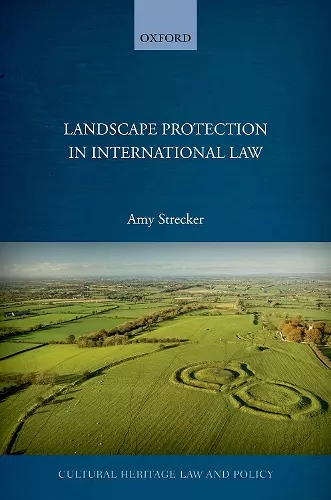Landscape Protection in International Law
Format:Hardback
Publisher:Oxford University Press
Published:13th Sep '18
Currently unavailable, and unfortunately no date known when it will be back

Once the exclusive prerogative of domaine réservé, landscape has gained increasing importance in international law in recent years. Since the introduction of cultural landscapes within the UNESCO World Heritage Convention, and particularly since the adoption of the European Landscape Convention (ELC), emphasis has shifted beyond a scenic, preservationist approach towards a more dynamic, human-centred one. The focus is not only on outstanding landscapes, but also on the everyday and degraded landscapes where most people live and work. Landscape is land shaped by people, after all, and its protection, management and planning have a number of implications for democracy, human rights and spatial justice. Despite these links, however, there has been little legal scholarship on the topic. How does international law, which deals for the most part with universality, deal with something so region-specific and particular as landscape? What is the legal conception of landscape and what are the various roles played by international law in its protection? Amy Strecker assesses the institutional framework for landscape protection, analyses the interplay between landscape and human rights, and links the etymology and theory of landscape with its articulation in law.
What Strecker has done is write the definitive piece on the topic of landscapes and law. This covers the philosophy, politics and law in a way that no other texts have done. It even covers cross-cultural aspects, which is often ignored in similar work. * Alexander Gillespie, Law Faculty, University of Waikato. Author of Environmental Law, Policy and Ethics and Protected Areas in International Law *
The topic of the book is relevant for research and teaching in several academic disciplines, such as landscape architecture, environmental science, cultural heritage studies, human geography, social anthropology, and legal studies. It is also highly relevant for practitioners in environmental management, landscape management and cultural heritage management, as well as for policy makers in these fields. The European Landscape Convention is attracting increasing interest outside Europe, with moves to develop a global landscape convention, and this book provides a valuable background for these efforts. * Michael Jones, Department of Geography, Norwegian University of Sciences and Technology, Co-Editor of Landscape, Law and Justice and The European Landscape Convention, Challenges of Participation *
ISBN: 9780198826248
Dimensions: 241mm x 163mm x 20mm
Weight: 516g
240 pages